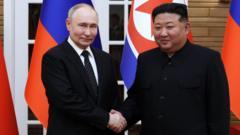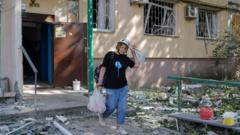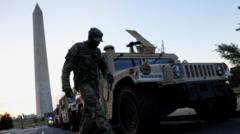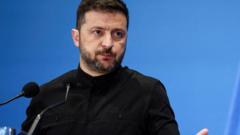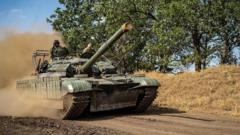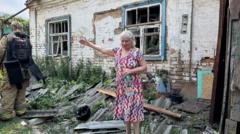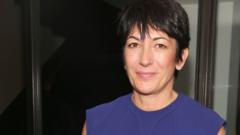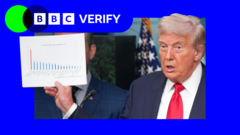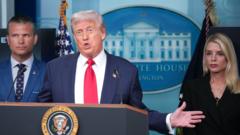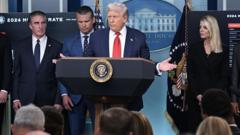The upcoming summit between Donald Trump and Vladimir Putin aims to negotiate peace in the Ukraine conflict, amidst tensions and differing territorial demands from both parties. The meeting symbolizes historical ties, taking place in Alaska, a former Russian territory.
Trump and Putin Set for High-Stakes Meeting in Alaska Amid Ukraine Conflict
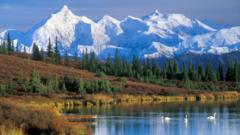
Trump and Putin Set for High-Stakes Meeting in Alaska Amid Ukraine Conflict
In a significant diplomatic move, Presidents Trump and Putin are scheduled to meet in Anchorage, Alaska, on August 15 to address the ongoing conflict in Ukraine.
The United States and Russia are preparing for a critical meeting between Presidents Donald Trump and Vladimir Putin, scheduled for Friday, August 15, in Anchorage, Alaska. This meeting follows Trump's ultimatum to Russia to reach a ceasefire in Ukraine or face further sanctions, a plan that has not succeeded in prompting peace despite previous discussions this summer.
The choice of Alaska as the meeting location adds historical context, as the US acquired the territory from Russia in 1867. Russian presidential aide Yuri Ushakov noted the geographical proximity of the two nations, underscoring a logical rationale for the summit's Alaskan setting. The last notable diplomatic event in the state occurred in March 2021, when tensions escalated during a meeting between American and Chinese officials.
Anchorage, Alaska's largest city, will host the summit at Joint Base Elmendorf-Richardson, a significant military site for the United States. The base, spread over 64,000 acres, plays a vital role in Arctic military operations.
The primary focus of this meeting is to explore options for ending the war in Ukraine. Trump has been vocal about his desire to conclude the conflict, claiming he could have resolved it swiftly if he were still in office at the time of Russia's 2022 invasion. He expressed frustration with Putin's handling of the war and imposed a deadline for an immediate ceasefire. Following the deadline, the meeting was formally announced, with US Special Envoy Steve Witkoff indicating productive dialogues occurred prior to this summit.
White House press secretary Karoline Leavitt described the meeting as a "listening exercise," stressing that there would be no immediate expectations of a ceasefire agreement. In addition, Trump indicated he might visit Russia after the meeting in Alaska as part of ongoing discussions.
Ukrainian President Volodymyr Zelensky is not slated to attend, as Trump suggested that he could join but has already participated in numerous discussions. Nonetheless, Trump promised to consult Zelensky shortly after his meeting with Putin. While the Ukrainian president has maintained that any agreements reached without Ukraine's involvement are unacceptable, he is expected to join Trump and multiple European leaders in a virtual meeting before the summit.
Both nations have expressed a desire for the conflict to end, although their objectives clash significantly. Trump seeks to recover some of the territories currently occupied by Russia, while Ukraine firmly opposes any concessions regarding regions seized by Moscow, including Crimea. Zelensky has reiterated that Ukraine will not reward Russia for its actions, firmly rejecting any proposals for territorial exchanges.
Putin's stance continues to emphasize territorial claims and Ukraine's neutrality, with ongoing military aggression underscoring the need for a nuanced resolution. The Trump administration has been working on a proposal that could involve territorial adjustments favoring Russia while requiring concessions in areas currently under its control, such as Kherson and Zaporizhzhia.
As sentiments remain divided, US Vice-President JD Vance emphasized the necessity for decisive leadership to forge a peace agreement, although he acknowledged that no solution would likely satisfy all involved parties. The dynamics between Trump and Putin have noticeably hardened, but the potential for a diplomatic breakthrough persists amidst complex negotiations.

